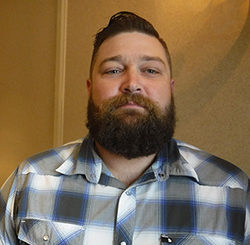
By / par Meredith Low
Setting strategy is a core responsibility of an organization’s board. But the process by which that strategy gets set can vary widely. Some boards are completely hands-off, simply reviewing a finished strategic plan the staff delivers to them. Other boards are completely hands-on, with very little staff input into the strategies or sometimes even the detailed plan.
Somewhere in between, there’s the idea of a strategic planning committee (or task force, or working group, etc.). This is a smaller group that takes special responsibility for the strategy process, on behalf of the board.
So, let’s talk about whether it’s a good idea for your strategy process, and how to run one effectively if you decide to use one.
Should you have a strategic planning committee?
It’s worth considering a strategic planning committee in certain situations. One common one is if your board is large (anything more than a dozen people). There are parts of the strategy process where it’s extremely difficult – even with a skilled facilitator – to have adequately complex conversations with too many people in the room. For a board like that, a smaller strategic planning committee can really dig into the issues and bring strategy options to a board once they’ve been honed.
Paradoxically, a strategic planning committee can also be a way for a board that’s disengaged to really connect to the strategy process more deeply. A subset of board members (more on committee composition below) can dig into the materials and take ownership. If it’s important to reinforce the board’s accountability, this can be a way to do it.
OK, we want one. What should it do?
The committee needs strong terms of reference. (But whatever you do, make it an ad hoc committee, not a permanent one!) A strategic planning committee can be tasked to:
- Review and validate the entire strategic planning process.
- Act as a sounding board for ideas and plans, including the strategy process as well as issue that arise.
- Work on specific items that the board may assign, to review and make recommendations that go back to the board. For instance, at certain points in the process, the board may have a discussion and want the committee to refine the outputs into a recommendation.
- Be the champions of the process and the strategy at the board table and beyond.
Note that a strategic planning committee is not a focus group—and it’s not a substitute for systematic research.
Who should be involved?
A committee like this will do well with a limited number— probably somewhere between three and six people. But who should they be? The answer will depend to some extent on the political environment you’re working in, but I would suggest some guidelines in terms of who you want to participate. (Note: this is a long list – but there should be individuals who check more than one of the boxes below.)
- A subset of current board members should be members, to ensure a throughline in the discussions around both tables.
- Absolutely the Chief Staff Officer and the senior volunteer (President or Chair) should be members.
- Others (a minority) could be drawn from outside the current board, especially to broaden the capabilities by enlisting experienced past board members who can bring institutional memory. They could also be people who know the sector well but aren’t tied to the association itself, to play more of a challenge role.
- Chairs of certain committees may be key.
- It is very important for senior staff to be involved, given their role in implementation, although they should be observers rather than committee members.
- Note there can be challenges under some circumstances (for instance, if it’s clear that the organization needs to be restructured and staff changes are needed). In cases like that, some in camera discussions may be needed.
As you consider who should be there from a role perspective, you can also consider what capabilities should be around the table:
- Veterans of the organization—as long as they can look ahead. People who know the organization well, or are willing to recognize the gaps in their knowledge.
- People with a distinctive perspective, with their finger on the pulse of important stakeholder groups.
- People with useful attributes:
- Strategic thinkers and question-askers.
- Fresh perspectives.
- Action-oriented. Willing to make decisions and get on with the plan.
- People whose opinion will hold weight, especially with the board.
If you have a chair-elect or a president-elect, that might be a good person to chair the committee, since it’s going to have a huge impact on their tenure in that leadership role.
No matter what, ensure form follows function
However you decide to run a strategic planning task force, bear in mind that form has to follow function. Only incorporate one into your strategy process if you believe it will improve the outcome. Set it up so you will get real value out of it. Be prepared to answer the question “why does this task force exist?” and ensure members understand that as well.
And then take advantage of the group’s expertise and experience. These groups can add an enormous amount to a strategy process, if they are really fulfilling their potential. Have you used a strategic planning task force or committee? What tips can you add? If you’d like to talk about how we can help you with your strategy, please get in touch at meredith@meredithlow.com ▪



